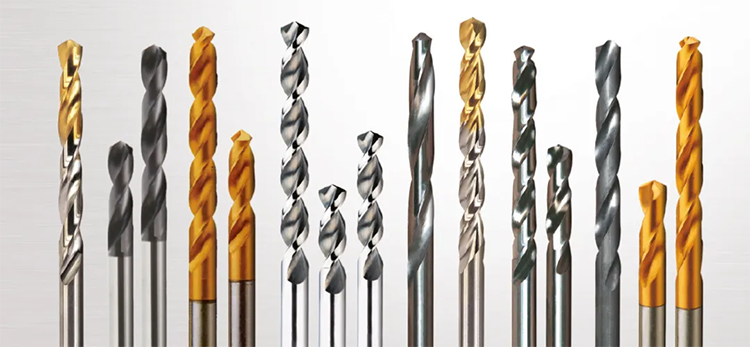Understanding HSS Grades for Drill Bits: M42, M35, M2, 4341, and 4241

High-speed steel (HSS) is a crucial material in the production of drill bits, offering a balance of hardness, toughness, and heat resistance. However, not all HSS grades are the same. The choice of material significantly impacts tool performance, longevity, and cost-effectiveness.
This article provides an in-depth comparison of M42, M35, M2, 4341, and 4241—five commonly used HSS grades—focusing on their composition, properties, and applications. A clear understanding of these differences can help businesses optimize tool selection for various drilling needs.
1. M42 HSS: Premium Performance for Extreme Conditions
Composition: 8% Cobalt (Co), 9.5% Tungsten (W), 3.9% Chromium (Cr), 1.15% Carbon (C)
Key Features:
Extreme hardness (HRC 66-68) with superior wear resistance
Outstanding heat resistance, maintaining cutting performance at high speeds
Suitable for drilling hardened steel, Inconel, titanium, and other tough metals
Applications:
Aerospace, precision machining, and high-performance manufacturing
Industries that require long tool life and resistance to extreme cutting conditions
2. M35 HSS: Cobalt-Enhanced for Hard Metals
Composition: 5% Cobalt (Co), 6.5% Tungsten (W), 4.2% Chromium (Cr), 1.9% Vanadium (V), 0.9% Carbon (C)
Key Features:
Hardness of HRC 63-66 with excellent durability
High red hardness, allowing operation at elevated temperatures
More cost-effective than M42 while still offering strong cutting performance
Applications:
Heavy-duty drilling in stainless steel, hardened steel, and cast iron
Ideal for industrial manufacturing, automotive, and metalworking applications
3. M2 HSS: The Industry Standard for General-Purpose Use
Composition: 6.5% Tungsten (W), 4.0% Chromium (Cr), 2.0% Vanadium (V), 0.85% Carbon (C)
Key Features:
Well-balanced hardness (HRC 62-65) and toughness
Good heat resistance, making it suitable for prolonged use
More affordable than cobalt-alloyed HSS while maintaining durability
Applications:
General-purpose drilling in mild steel, aluminum, and brass
Used across construction, manufacturing, and repair industries
4. 4341 HSS: Cost-Effective for Light-Duty Drilling
Composition: Lower alloy content with reduced tungsten and vanadium
Key Features:
Hardness of HRC 58-60, making it softer than M2
More affordable but lacks high-speed or heavy-duty capabilities
Best suited for soft metal and non-metal applications
Applications:
Light-duty drilling in soft metals, plastics, and wood
Common in DIY, general-purpose tools, and cost-sensitive markets
5. 4241 HSS: The Entry-Level HSS for Consumer-Grade Tools
Composition: Similar to 4341 but with even lower tungsten and vanadium content
Key Features:
Hardness of HRC 56-58, making it the softest among these grades
Least wear-resistant, with limited heat resistance
Primarily used for non-intensive drilling applications
Applications:
Suitable for thin sheet metal, plastic, and household drilling tasks
Common in budget-friendly tool sets and DIY applications
Conclusion
Choosing the correct HSS material depends on drilling conditions, material hardness, and budget considerations:
M42 & M35: Best for high-performance, heavy-duty drilling in tough metals
M2: A reliable and cost-effective choice for general-purpose industrial use
4341 & 4241: Budget-friendly options for light-duty drilling in soft materials
At Coinch Tools, we manufacture high quality HSS twist drill bits tailored to various industrial needs. Contact us to find the best drilling solutions for your business.

